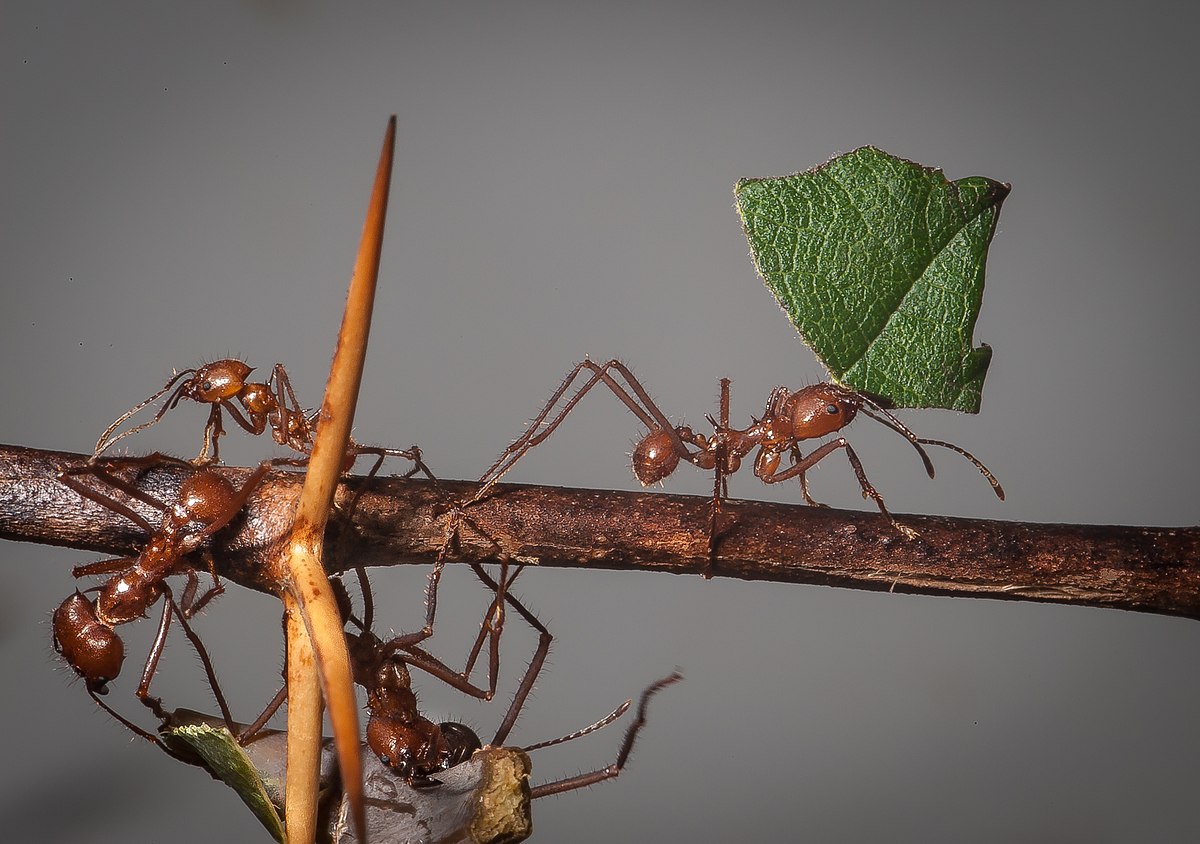Ants are eusocial insects of the family Formicidae and, along with the related wasps and bees, belong to the order Hymenoptera. More than 12,000 different ant species have been identified in the world. Of this, 341 have been identified in Guyana. Some of the activities performed by these tiny, industrious insects would leave you in amazement.
Five Species Of Ants Found In Guyana
- Army Ants (Eciton burchellii) – The name army ant (or legionary ant or marabunta) is applied to over 200 ant species, in different lineages, due to their aggressive predatory foraging groups, known as “raids”, in which huge numbers of ants forage simultaneously over a certain area. The workers of army ants are usually blind or can have compound eyes that are reduced to a single lens. The soldiers of army ants are larger than the workers, and they have much larger mandibles than the worker class of ants, with older workers possessing larger heads and stronger mandibles than the younger ones. Males are large in size and have a large cylindrical abdomen, highly modified mandibles and uncommon genitalia not seen in other ants. Colonies of real army ants always have only one queen, while some other ant species can have several queens.
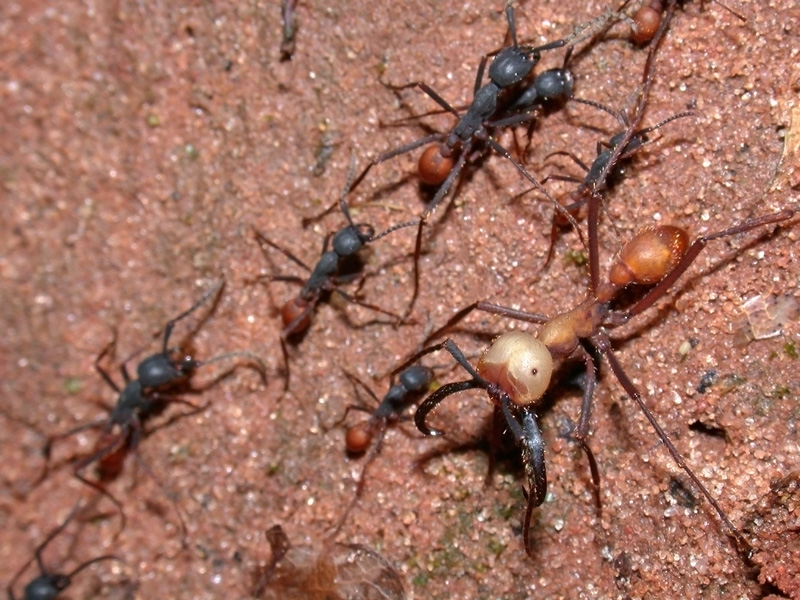
By Alex Wild – Own work, CC0, https://commons.wikimedia.org/w/index.php?curid=18089544
Scientific Classification of the Army Ant
- Kingdom: Animalia
- Phylum: Arthropoda
- Class: Insecta
- Order: Hymenoptera
- Family: Formicidae
- Subfamily: Dorylinae
- Genus: Eciton
- Species: E. burchellii
- Fire Ants/Red Ants (Solenopsis) – Solenopsis are stinging ants and most of their common names reflect this, for example, ginger ants and tropical fire ants. Many species also are called red ants because of their light brown color, though species of ants in many other genera are similarly named for similar reasons. The bodies of mature fire ants, like the bodies of all typical mature insects, are divided into three sections: the head, the thorax, and the abdomen, with three pairs of legs and a pair of antennae. Fire ant queens, the reproductive females in their colony, are generally the largest. Males mate with the queen and die soon after mating. The soldier ants are known for their larger and more powerful mandibles while the worker takes care of regular tasks (the main tasks in a colony are caring for the eggs/larvae/pupae, cleaning the nest, and foraging for food).
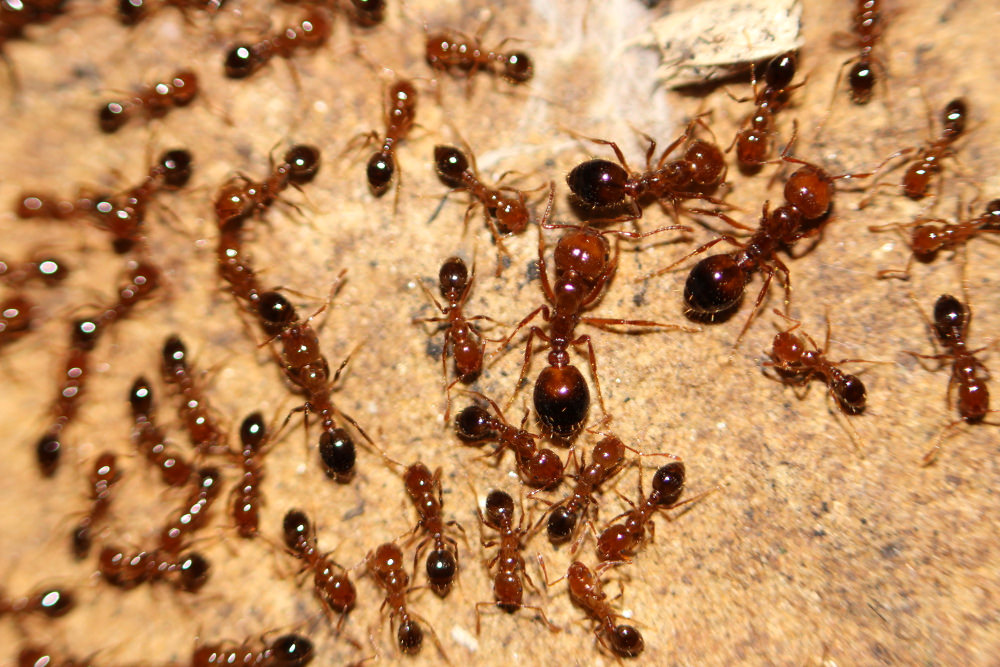
Fire Ants Aka Red Ants | https://www.flickr.com/photos/100620478@N03/14939766644
Scientific Classification of the Fire Ant
- Kingdom: Animalia
- Phylum: Euarthropoda
- Class: Insecta
- Order: Hymenoptera
- Family: Formicidae
- Subfamily: Myrmicinae
- Tribe: Solenopsidini
- Genus: Solenopsis
- Leaf-cutter Ants (Atta) – Leaf-cutter ants are relatively large, rusty red or brown in color, and have a spiny body and long legs. The colony of leaf-cutter ants is divided into many groups with each group being responsible for a specific activity. Some guard and protect the colony whilst others go out and forage for food. The most important member of the colony is the Queen. She is the only egg-laying member of the colony and is responsible for its continued existence. Only one Queen is found per nest.
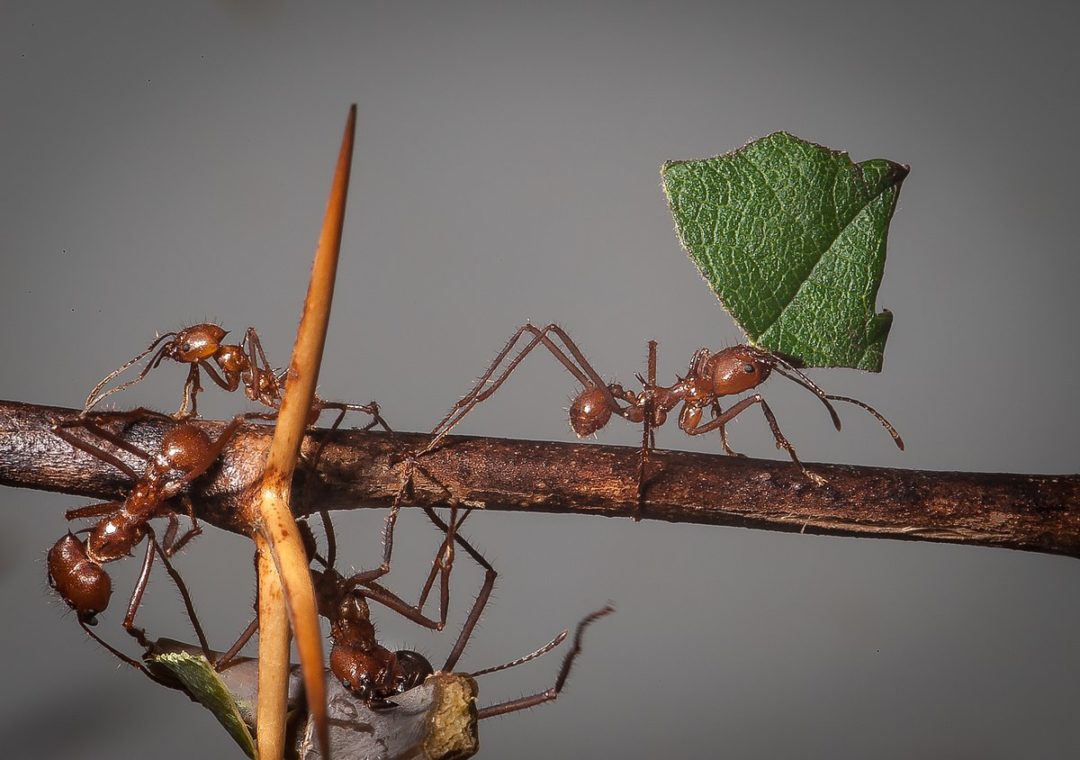
Leaf-cutter Ants | https://commons.wikimedia.org/wiki/File:Atta_cephalotes-pjt.jpg
Scientific Classification of Leaf-cutter Ant
- Kingdom: Animalia
- Phylum: Arthropoda
- Class: Insecta
- Order: Hymenoptera
- Family: Formicidae
- Subfamily: Myrmicinae
- Tribe: Attini
- Genus: Atta
- Carpenter Ants (Camponotus) – They build nests inside wood consisting of galleries chewed out with their mandibles, preferably in dead, damp wood. They do not consume the wood, however, unlike termites. Sometimes, carpenter ants hollow out sections of trees. They also commonly infest wooden buildings and structures, and are a widespread nuisance and major cause of structural damage. However, their ability to excavate wood helps in forest decomposition. Carpenter ant species reside both outdoors and indoors in moist, decaying, or hollow wood, most commonly in forest environments. They cut “galleries” into the wood grain to provide passageways for movement from section to section of the nest. Certain parts of a house, such as around and under windows, roof eaves, decks and porches, are more likely to be infested by carpenter ants because these areas are most vulnerable to moisture.
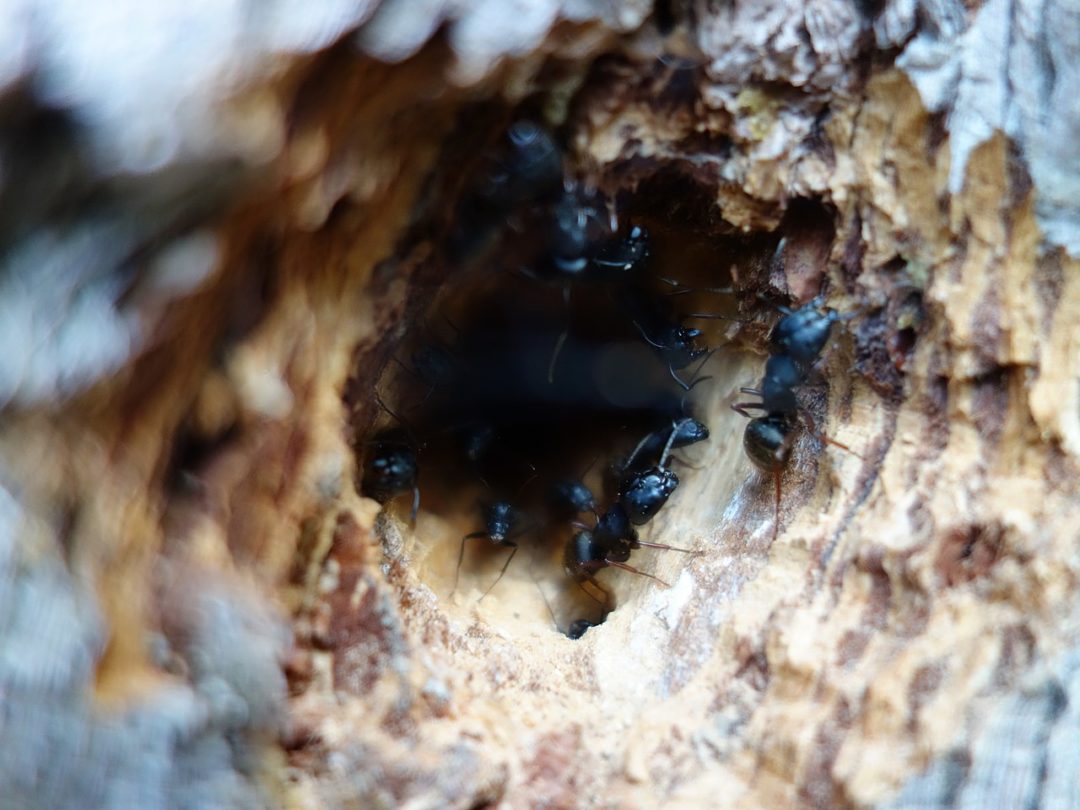
Carpenter Ants | By NaCl58 – Own work, CC BY-SA 4.0, https://commons.wikimedia.org/w/index.php?curid=69995601
Scientific Classification of the Carpenter Ant
- Kingdom: Animalia
- Phylum: Euarthropoda
- Class: Insecta
- Order: Hymenoptera
- Family: Formicidae
- Subfamily: Formicinae
- Tribe: Camponotini
- Genus: Camponotus
- Bullet Ants (Paraponera clavata) – The bullet ant is a tropical rainforest ant named for its powerfully painful sting, which is said to be comparable to being shot with a bullet. Although nonaggressive, bullet ants will sting when provoked. When one ant stings, it releases chemicals that signal other ants in the vicinity to sting repeatedly. The bullet ant has the most painful sting of any insect, according to the Schmidt Pain Index. The pain is described as blinding, electric pain, comparable to being shot with a gun as said before.
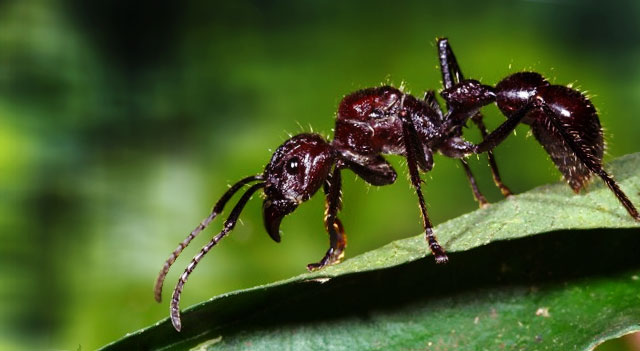
The bullet ant |
https://en.wikipedia.org/wiki/Paraponera_clavata
Scientific Classification of the Bullet Ant
- Kingdom: Animalia
- Phylum: Arthropoda
- Class: Insecta
- Order: Hymenoptera
- Family: Formicidae
- Subfamily: Paraponerinae
- Tribe: Paraponerini
- Genus: Paraponera
- Species: P. clavata
Ants In Guyana
There are many ants in Guyana; as shown above there are 341 species and subspecies. These ants have their own unique activities that keeps them busy and makes them industrious. The 5 species of ants described are only a few compared to the many more out there. One proverb says, “Go to the ant, you lazy one; observe its ways and become wise.” So, the next time you see an ant, instead of squashing it, investigate it and try to visualize the many activities they are involved in.
Article References:
- https://www.kaieteurnewsonline.com/2013/08/11/the-army-ant/
- https://en.wikipedia.org/wiki/Eciton_burchellii
- https://en.wikipedia.org/wiki/Fire_ant
- http://agriculture.gov.gy/wp-content/uploads/2016/01/ants.pdf
- https://en.wikipedia.org/wiki/Atta_(genus)
- https://en.wikipedia.org/wiki/Carpenter_ant
- https://en.wikipedia.org/wiki/Paraponera_clavata
- https://www.thoughtco.com/bullet-ant-sting-facts-4174296

